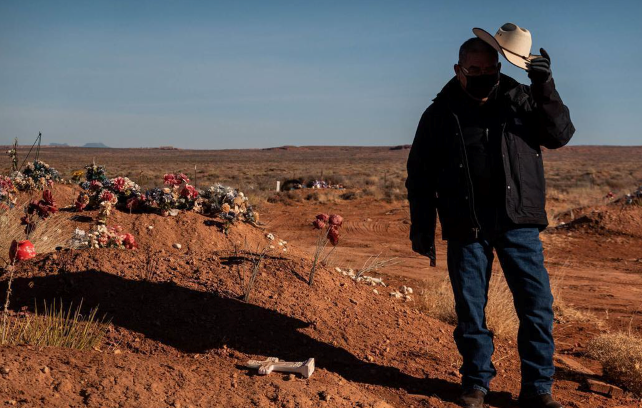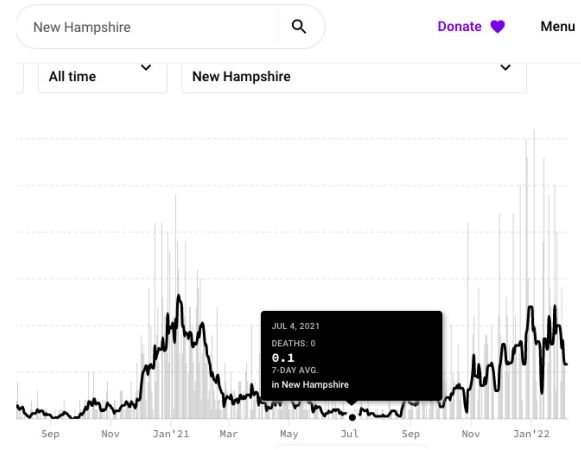I have been pondering this all week.
There are several ways to count the covid-19 deaths. One is the official count, where people can legitimately argue about whether a death was “by covid” or “with covid”. That count in the U.S. is at 943,000.
A better way is “excess deaths” which the health authorities (Centers for Disease Control in the U.S.) have been routinely counting, long before covid-19. Historically, the number of deaths follows a consistent pattern—not level throughout a year, but pretty consistent from one year to the next. Against this baseline, it is straightforward to find the excess deaths—and one can argue that these are ALL, directly or indirectly, due to the pandemic. Last week, the U.S. excess deaths topped one million. The Keene Sentinel had an excellent story (from the Washington Post) observing this tragic event: Sentinelsource.com 2/19/2022
They included this picture of a man near his brother’s gravesite in Arizona. It gave me goosebumps—what a perfect way to encapsulate the one million deaths tragedy.
As far as I can tell, today is exactly two years since the Sentinel’s first mention of the “novel coronavirus”. On March 2nd, I wrote in my diary “corona virus hysteria is building …” Then, of course, things happened fast: the local schools closed on the 16th, Vermont began stay-at-home on the 25th and New Hampshire on the 28th, the same day I emailed a friend and speculated that this would lead to one million U.S. deaths.
But even though I expected it, now that it has come to pass, the whole pandemic is astounding to me—the most important historical event since World War II. While case rates and hospitalizations have plummeted in the U.S., the disease continues to kill about 10,000 people a day throughout the world, now totaling at least six million deaths.
We have become numb to these kinds of numbers. But we must never become numb to these kinds of numbers.
The pandemic is not over. We now have greatly improved tools and understanding for moving forward. Fresh air ventilation. Meters for measuring it. Masks that work. Methods for calculating the overall safety of multiple measures.
Let us remember the ongoing human costs—the dead, the injured, and the survivors. Let us appreciate and use the gifts we have, and work together to create the new normal.
Highlights From Past Blogs
February 23 - See-through Masks
February 16 - Ventilation Revolution
February 11 - When Will it Be "Safe?"
February 2 - Covid-19 Testing
January 27 - How Long Does Immunity Last?
January 20 - You Need a Fresh Air Meter
January 11 - Air Purifiers
January 4 - Masks That Actually Work
December 22 - Blog Intro and History
December 15 - The Double Risk of Indoor Dining
December 13 - Omicron Symptoms
December 10 - Simple Air Filtration
December 9 - Comprehensive Guide to Covid-19 Safety in Buildings
December 6 - Solution to Pollution is Dilution
November 24 - No Magic to Six Feet









